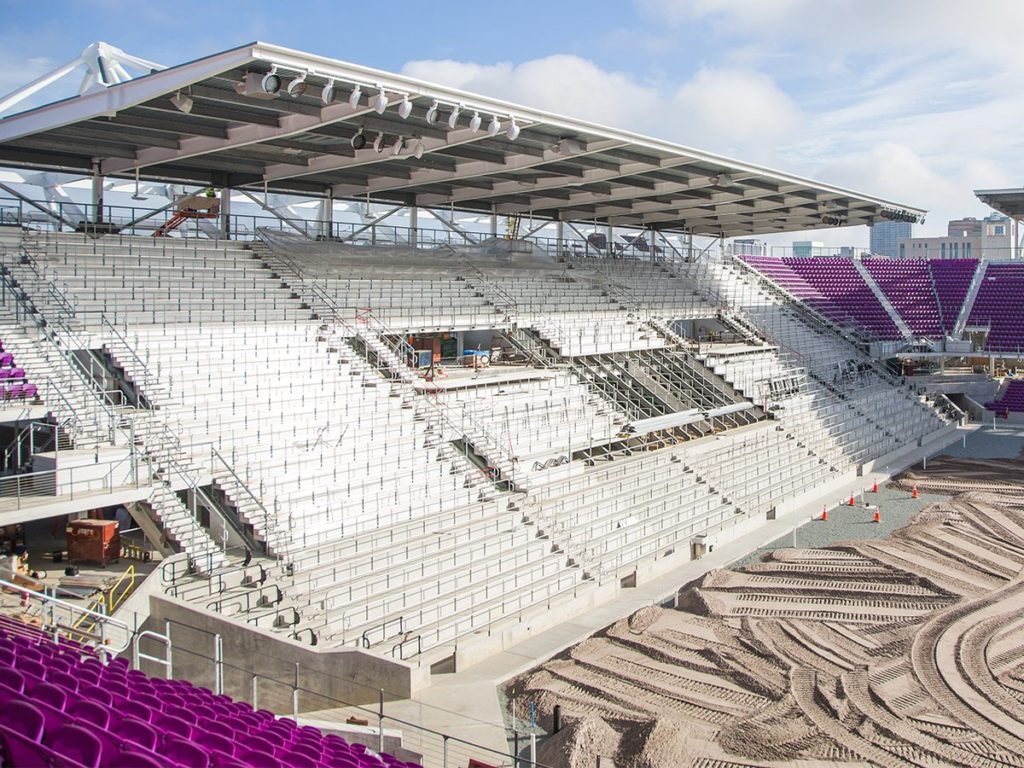In traditional European football stadiums, a standing pen, or terrace, was always an option for the rabid fan.
It was good for the clubs, because they could pack in the maximum number of paying fans, and good for the fans, as it allowed them to sing, cheer and intimidate the opposing side.
Then, there was Hillsborough.
In April of 1989, 96 fans were killed and more than 700 were injured when a standing pen was overloaded during an FA Cup semi-final at Hillsborough Stadium in Sheffield, England. That incident changed the game, and resulted in reform in stadium design and regulation, requiring all Premier League stadiums, and all UEFA stadiums, to be all seated.
No more terraces. No more standing.
The fact is, however, soccer fans, especially the most vociferous fans, like to stand. Standing is simply the most engaged way to watch the game.
Even in leagues where stadiums are all seated, like the EPL or MLS, enthusiastic supporters still stand, but they stand in front of a seat. This comes with safety hazards, as fan surges and tripping over seats can cause injury.
So in recent years, various European clubs and stadium designers, mindful of Hillsborough’s legacy, but aware of fans’ penchant for standing, are attempting to re-tool standing sections. The leader of the movement is the German Bundesliga, where nearly one in four tickets sold is for a standing section, and new approaches to standing sections have been tested and implemented.
Stadium designers across the globe are taking their cue from Germany, recognizing that they can facilitate tradition, fan experience and safety with what’s being called “safe standing” design.
Safe standing design has taken on a variety of forms, but is being used across Europe. Because of the “all-seated” requirements imposed by UEFA for European competitions, many European stadiums have adopted a system known as rail seating, or vario-seats, where rudimentary seats can be flipped up for standing, or flipped down when required for international competition.
In America, the safe standing revolution is being led by the design firm Populous. Two of the firm’s latest MLS projects, in Orlando and Minnesota, are pioneering safe standing in their designs.
Because American stadiums have no “all seated” requirements, Populous has designed standing sections with concrete risers separated by a continuous guardrail for safety, with no rail seats. If competition requirements ever did require seats, temporary seats could be installed.
Their first priority, according to Populous lead designer Bruce Miller, was the safety of American fans. Miller told Minnesota-based soccer publication FiftyFive.One, “I must’ve watched ESPN’s 30 for 30 documentary on Hillsborough 20 or 30 times. I wanted to understand how it happened. I wanted to understand why it happened. I needed to do this before I could feel comfortable making the case that it [standing in large numbers] can be safe.”
As a result, in an additional nod to safety, each standing space will be marked and numbered in the row to avoid overcrowding and facilitate crowd control. Also, in an additional nod to comfort, each space will be provided with a cupholder.
Orlando City owner Flavio Augusto da Silva is the man most responsible for the safe standing movement in America, as he asked Populous to incorporate it in their design.
As a result, the new Orlando City stadium is expected to feature “The Wall” – 4000 supporters in a massive safe standing section. The idea is modeled on Borussia Dortmund’s famous “Yellow Wall” at their Westfalenstadion, the largest standing section in Europe at 25,000 strong.
Minnesota United FC’s ownership group also signed on to the idea of safe standing. Miller told FiftyFive.One that the new stadium being built in St. Paul will have a safe standing section with a capacity of 3000, and that it will be the most steeply raked stand in MLS.
Soccer fans are going to stand. In Orlando and Minnesota, they will do so safely. A hot trend in soccer stadium design globally, with these new stadiums adopting it, safe standing is likely to be a feature of any new American soccer stadium.
If so, supporters groups across the country will cheer—standing.
Image courtesy Orlando City SC.
This article first appeared in the weekly Soccer Stadium Digest newsletter. Are you a subscriber? Sign up here for your free subscription!

